
Your Family History
Your Family History was published by Wharncliffe Publishing Limited. It has now ceased publication.'Mad Jack' - the life of Siegfried Sassoon
Nick Thorne looks at the war poet and writer’s family line
The poet and writer Siegfried Sassoon was born on 8 September 1886 in the small Kent village of Matfield. Despite his germanic first name his ancestry was not from Germany but a mix of English and middle eastern. His father was from a family of Baghdadi Jews who were merchants and his mother was from an English family of sculptors. Using TheGenealogist we can find his birth registered in the BMD indexes for Tonbridge area of Kent.
Siegfried’s mother, Georgiana Theresa Thornycroft, used her middle name of Theresa when she signed the 1911 census; though it is reported that she was known affectionately as ‘Ash’ by her son. She was part of the artistic Thornycroft family. Her father Thomas Thornycroft, mother Mary, brother Hamo and maternal grandfather John Francis were all well known sculptors. Another of her brothers was John, the founder of the successful Thornycroft naval engineering company.

Siegfried Sassoon, by George Charles Beresford
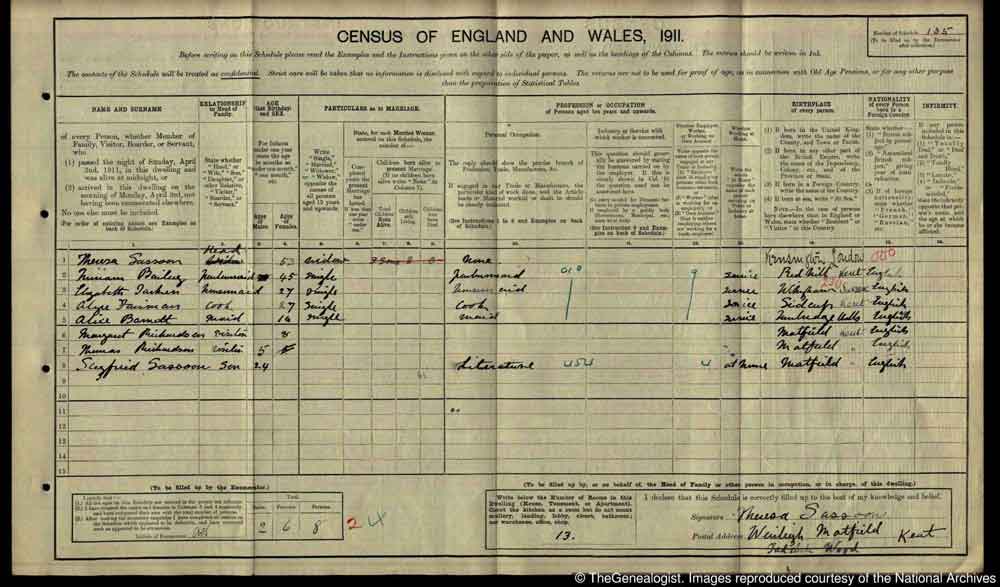
1911 census for Weirleigh at Matfield in Kent on TheGenealogist
Born in London in the year 1853 her name, we can see by using TheGenealogist, was registered simply as Georgiana Thornycroft.
In 1884, when she was 31, Theresa married the 23 year old Alfred Ezra Sassoon. Not only was she older than her husband-to-be but she was a Christian and his Jewish family were so unhappy with the match that they disinherited Alfred. Theresa and Alfred had three sons of which Siegfried was their middle child, but the marriage didn’t last and Alfred left his wife and boys. A search of the death records on TheGenealogist reveals his passing in 1895 when he was just 34.
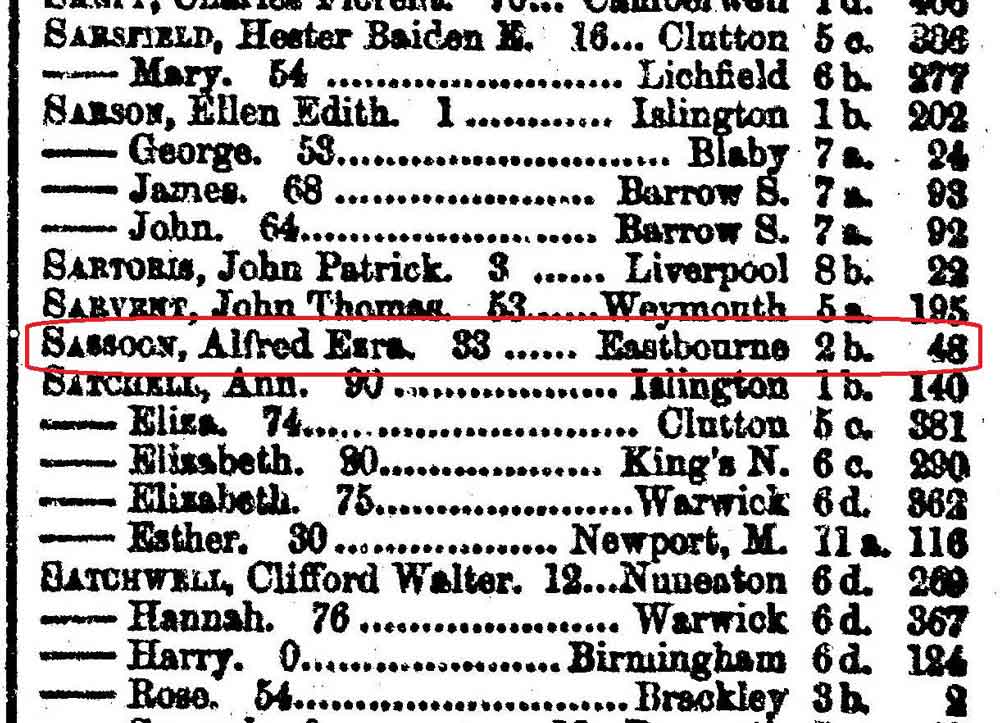
Death of Alfred Ezra Sassoon died Eastbourne 1895
If we look for their son in the Peerage, Gentry & Royalty records on TheGenealogist we can find an entry for him in Kelly’s Handbook to the Titled Landed and Official Classes 1942 . This gives us certain facts about Siegfried’s life that we can follow up, including his war service.

Kelly s Handbook to the Titled Landed and Official Classes 1942
We also learn from this record that his education included Marlborough school and so by turning then to the Educational records on TheGenealogist we can find Siegfried’s entry in the Marlborough College Register 1843-1933. This lists his birth date, father’s address, more details of his war service and some of his published works.
Following the trail of his First World War service there are a number of records to find for Siegfried from within the Military collection on TheGenealogist. For example, we find him in a number of Army Lists with the one for October 1916 having the symbol of crossed swords before his name so denotes that he was on War Service. It also records his M.C. for the first time in this edition. He was given the nickname of ‘Mad Jack’ by his men whom found his leadership inspiring on the various suicidal night-raids and bombing patrols . The reports say that although he was an efficient company commander depression at the horror and misery that the soldiers were forced to endure created a contradictory manic courage, and he was nicknamed "Mad Jack" by his men for his near-suicidal exploits. On 27 July 1916 he was awarded the Military Cross for conspicuous gallantry during a raid on the enemy's trenches.
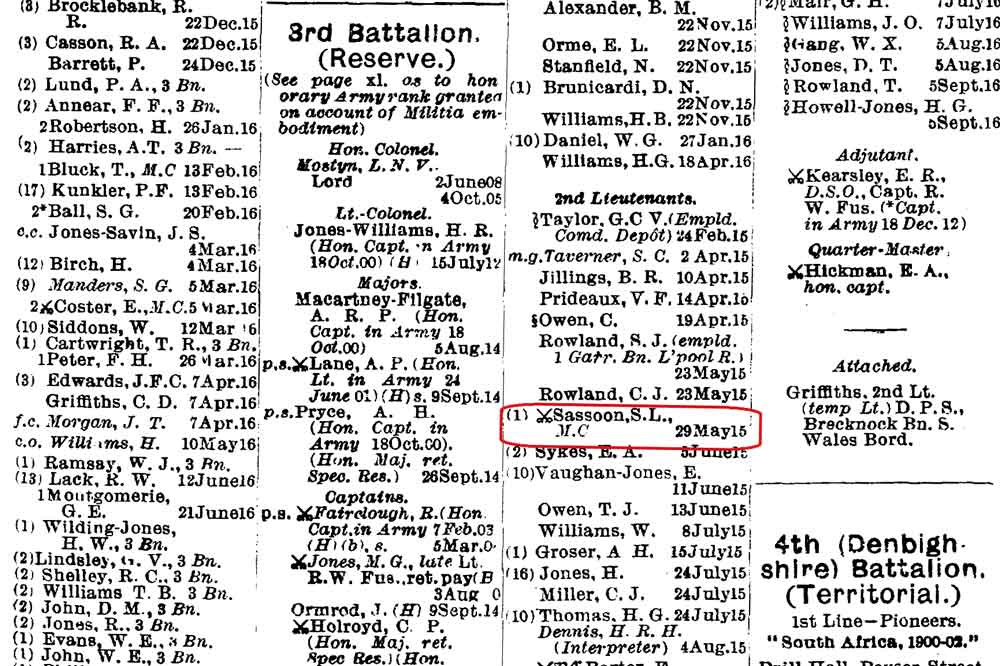
Army List October 1916 from within the Military collections on TheGenealogist
Siegfried became one of the leading poets of the First World War in which he wrote works that described the horrors of the trenches, while also satirising the patriotic jingoism of those who he thought were responsible. He made a lone protest in 1917 against the continuation of the hostilities in his "Finished with the War: A Soldier's Declaration" . His declining to return for duty resulted in his admission to a military psychiatric hospital diagnosed as suffering from shell shock.
Within the Casualty List records on TheGenealogist we can find Siegfried Sassoon listed twice. The first was in April 1917 when a German sniper hit him during a raid near Fontaine-les-Croisilles in April. While recuperating back in England, it was then that Siegfried decided to make his anti-war stance known with his Soldier’s Declaration . On the 13th July, not long after returning to the front line, Siegfried was wounded once again, but this time it was from 'friendly fire'. Near Arras, as he returned to his trench, a British soldier shot him in the head mistaking him for a German soldier.
With ancestors who had fought in the First World War very often they were recorded in a Roll of Honour for their school, university or some other organisation. TheGenealogist has a number of these available to search within its comprehensive military collection. Though Siegfried Sassoon was not himself brought up as a jew, because of his ancestry, we can find an entry for him in British Jewry Book of Honour to honour his award of the Military Cross. The citation reads: SIEGFRIED LORAINE SASSOON For conspicuous gallantry during a raid on the enemy trenches. He remained for one and a half hours under rifle and bomb fire collecting and bringing in our wounded. Owing to his courage and determination all the killed and wounded were brought in.
Research in the Newspapers and Magazines
Another great line of research that we can pursue with ancestors that served in the First World War is to use the newspapers and magazines on TheGenealogist. For example, browsing The Sphere newspaper we can see that Siegfried Sassoon was having his poems published next to articles on The Great World War in 1919 and this while he was a serving officer.
The newspapers can be used to build a picture of a family in other time periods as well. Siegfried’s father, Alfred, was born in 1861 in the St Pancras area of London to the wealthy merchant Sassoon David Sassoon, a British Banker and businessman. Going back another generation and using the Newspaper and Magazine collection we are able to find a number of articles in The Illustrated London News about Siegfried’s great-grandfather, David Solomon Sassoon who had been the Treasurer of Baghdad. From these we can learn about the journey that the family made as they fled from Baghdad to Bushire and then Bombay in India. This was when plague and the breakdown of government made it unsafe to stay in the Middle East. The Sassoons then expanded the family business to Shanghai, Canton and Japan before Seigfried’s grandfather, Sassoon David Sassoon and his half brother Albert David Sassoon (later to be knighted) moved to Britain to be educated.
In contrast to the image of David Solomon Sassoon, published 5th December 1863 in which he was resplendent in the attire of a Baghdadi Jew, the June 1st edition of The Illustrated London News for 1872 shows us the difference in his son’s dress. Viewing this newspaper article on TheGenealogist gives us a splendid line drawing portrait of Sir Albert Sassoon in western dress.
Passenger Lists
As one may expect, with an international business family, the Sassoons travelled extensively and so appear in many of the Board of Trade Passenger Lists that can be found on TheGenealogist. If we look at the 1920s decade of BT27 records of outbound passengers there we can find the 33 year old Siegfried Sassoon travelling from Plymouth to New York. What is interesting to take away from looking at the image of the page is that Siegfried has been recorded as intending to make the U.S.A. his place of permanent residence. This voyage was on the 19th January 1920 and the author was on a lecture tour.
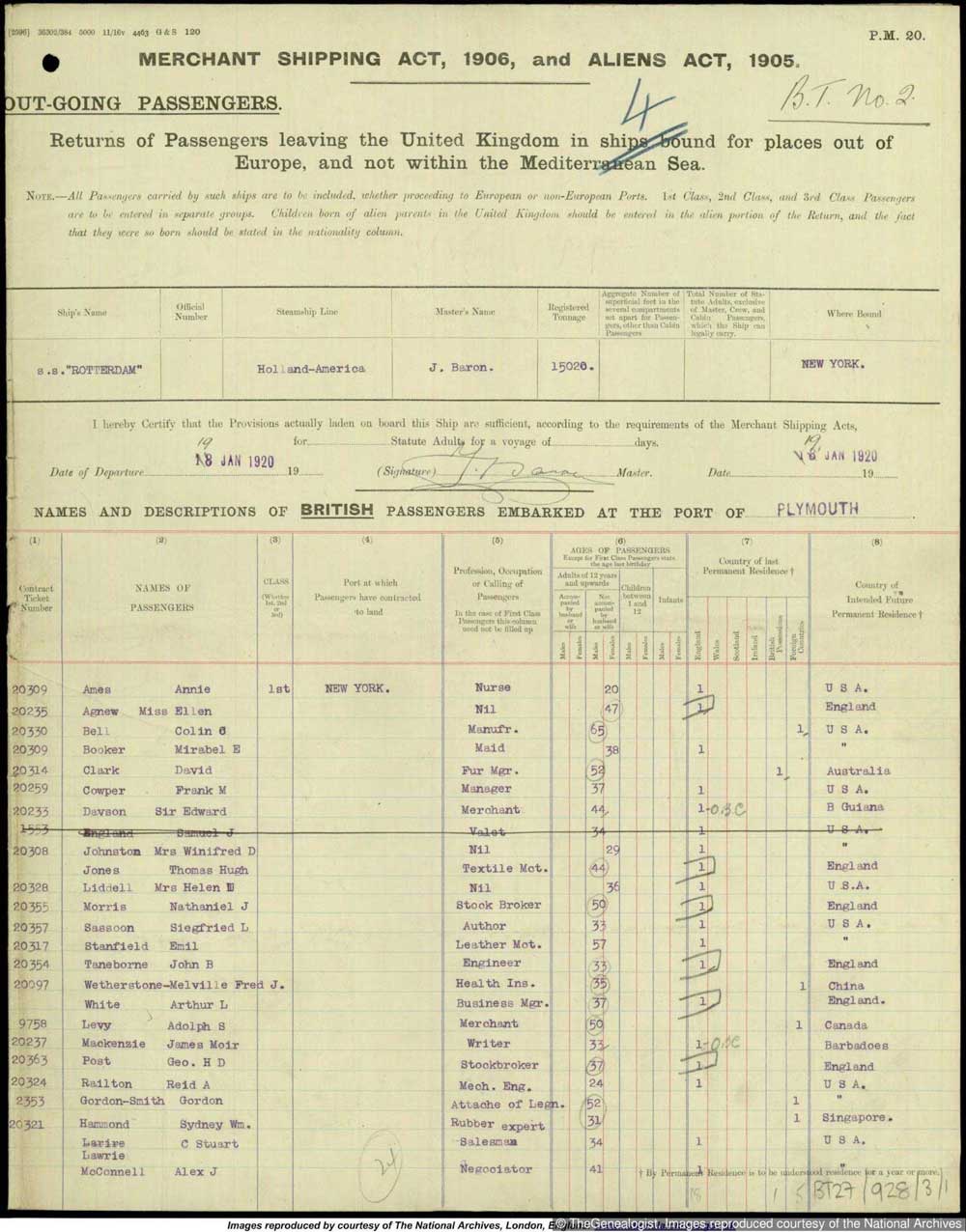
BT27 Passenger List on TheGenealogist for Siegfried Sassoon’s voyage on 19th January 1920
He did, of course, return to Britain where, after a succession of love affairs with men he eventually married Hester Gatty. We can use the marriages records on TheGenealogist to find an ancestor’s entry in the indexes and get all the details needed to purchase a certificate from the General Register Office. In the case of Siegfried and Hester the particulars show us that they married in Christchurch in the fourth quarter of 1933. This marriage was not to be a successful one, with the couple separating in 1947. It did, however produce a son, George Thornycroft Sassoon whose birth we can also trace in the indexes of 1936 on TheGenealogist.
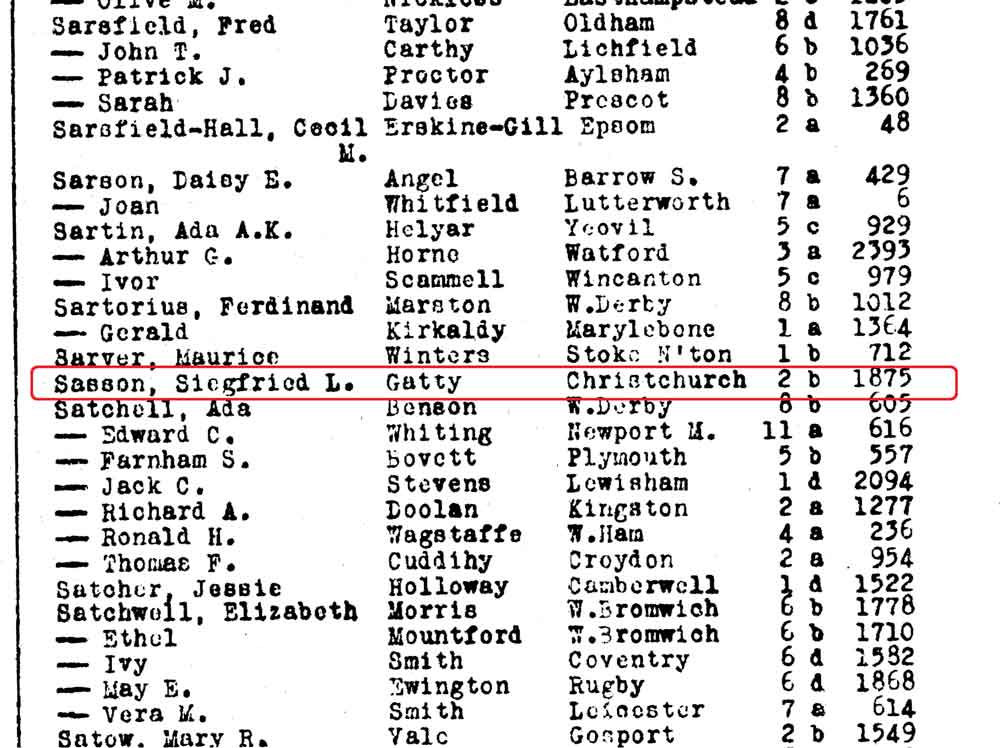
Marriage of Georgiana Thornycroft to Alfred Sassoon in Kensington in 1884 found on TheGenealogist
Siegfried Loraine Sassoon died on the 1st September 1967 and a search of the death records on TheGenealogist reveals that it was recorded at Warminster in Wiltshire.
With a number of different record collections available on TheGenealogist we have been able to discover about the author’s fascinating family history. We used the newspapers and magazines collection, his entries in the military, education records and the passenger lists. Along with the census, births, marriages and death records, many of those records that we have used here can also be employed to find our own ancestors using the extensive resources of TheGenealogist.